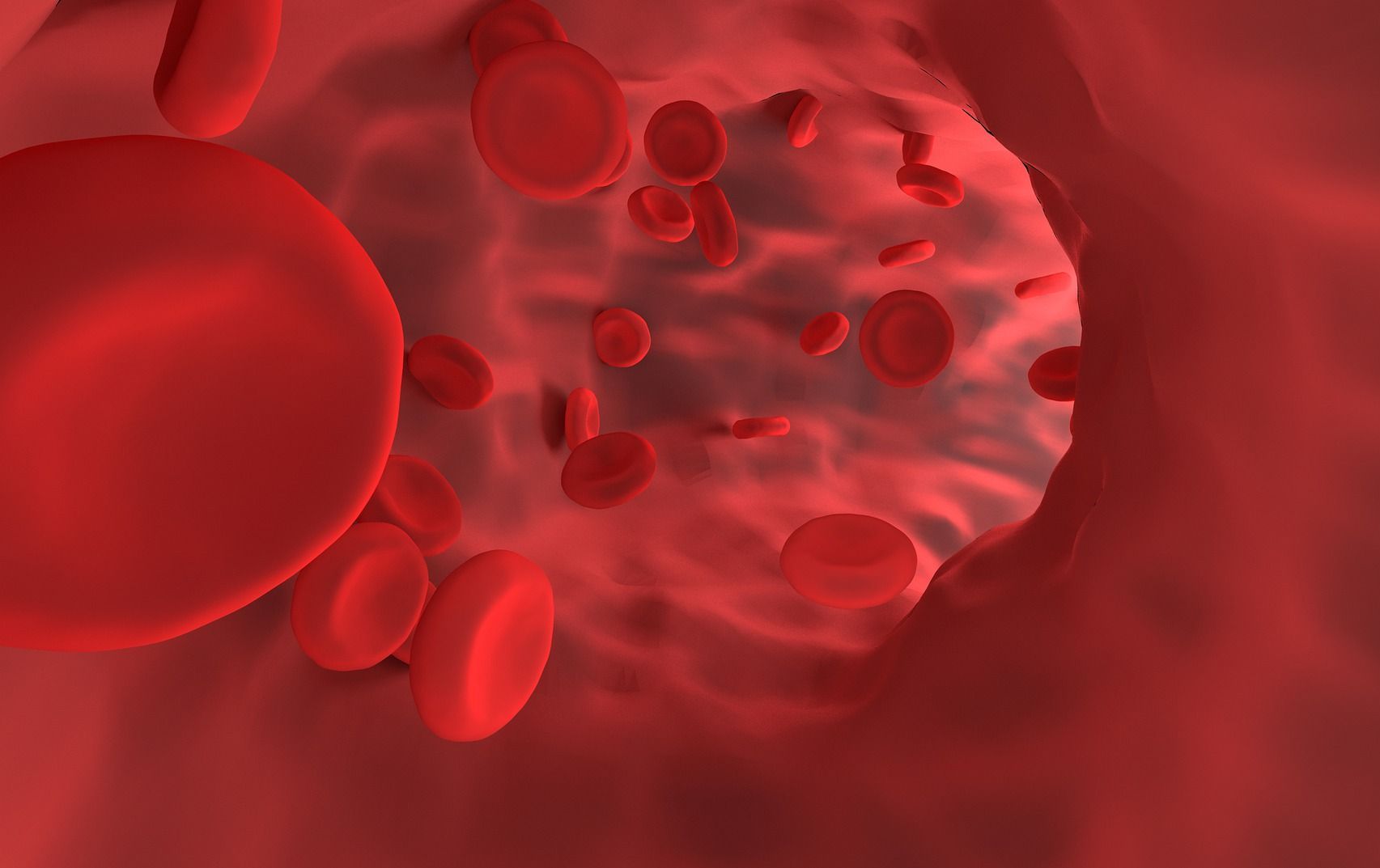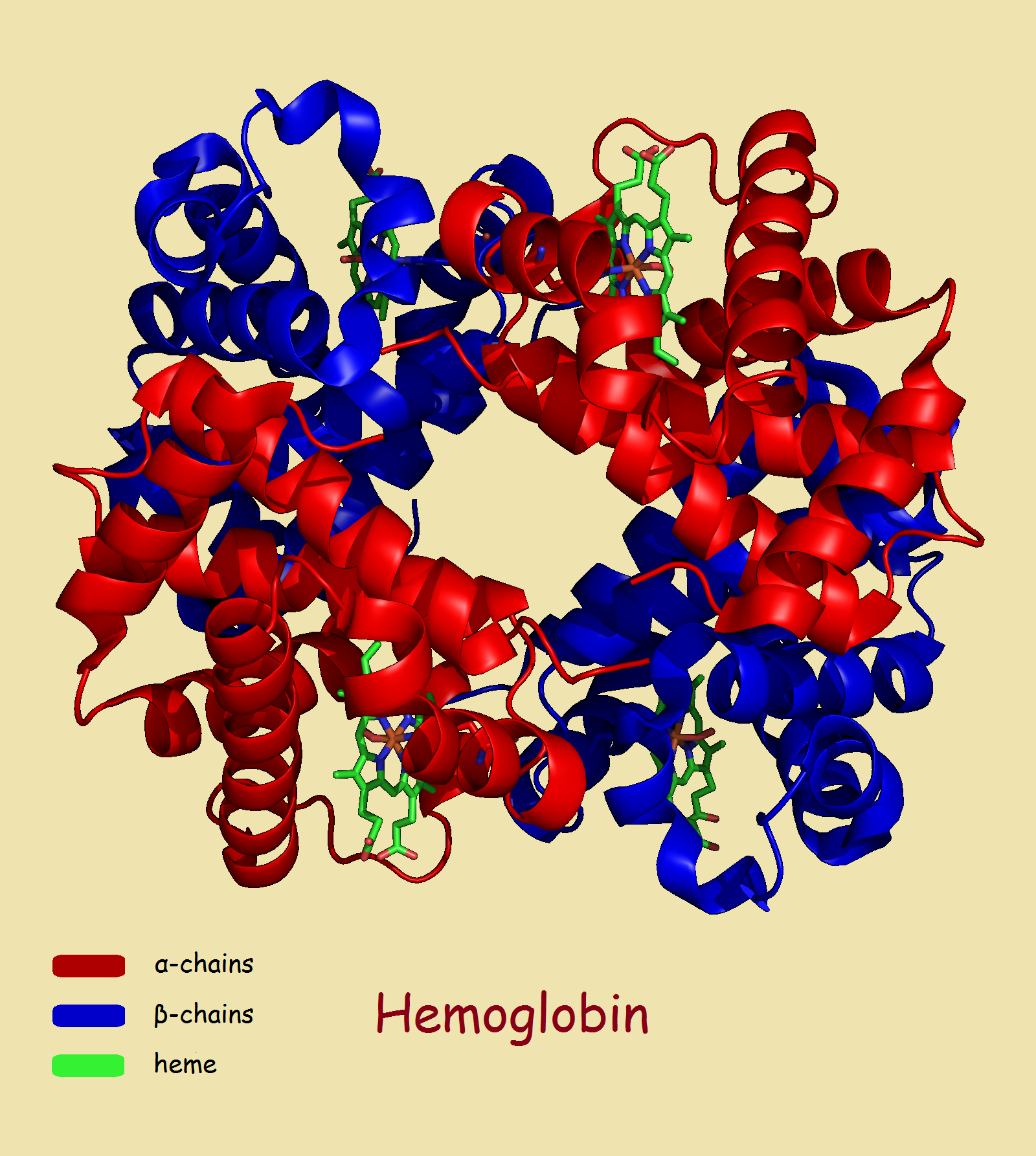
Article Contents
We here present artwork and a brief text, coupled with a most helpful Khan Academy video, so that, hopefully, the pre-diabetic or diabetic patient, who has a measure of technical background, can understand what the A1C test is all about.

Hemoglobin Image
Our second image illustrates hemoglobin’s 3-D branch structure using red for its two alpha (α) chains and blue for its two beta (β) chains. A sugar molecule forms a covalent bond to the beta chains producing a glycated structure. The 4 oxygen carrying heme units in each hemoglobin molecule (green) are drawn in such a way as to illustrate the shape of their carbon-skeleton.
Khan Academy Video: A1C Levels
Let’s view the following Khan Academy video, allowing it to review what we have covered thus far, and to provide additional details, broadening our understanding of the A1C test and its relevancy.
Concluding Remarks
Red blood cells have a life expectancy of approximately 3 to 4 months. Once formed, a glycated hemoglobin molecule does not lose its attached sugar. This allows the physician to take a blood specimen a reduced number of times per year, giving a stable, rather than a spike sugar level evaluation of the patient.
This provides a most useful tool in the evaluation of a patient’s diabetic potential, while not requiring fasting.
Note: You might also enjoy Comparing Hemoglobin and Chlorophyll
References:
- Harvard Catalyst: Hemoglobin A, Glycosylated & National Library of Medicine
- Michigan Diabetes Research Center: Clinical Core: Chemistry Laboratory: Hemoglobin A1C Fact Sheet
- Biologicmodels.com: Glycated Hemoglobin HbA1c
- Hemoglobin Image License
← Back to Food and Health
← Home
